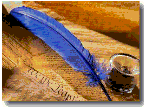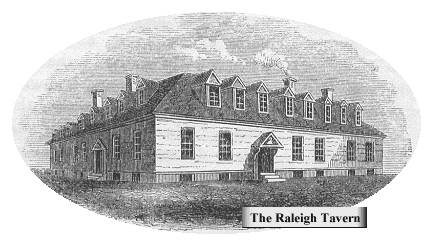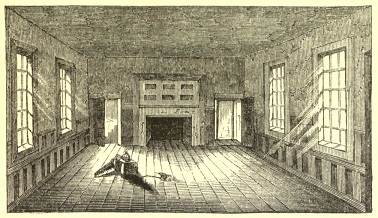
The Declaration of Independence
When in the course of human events . . .
The Raleigh Tavern
The Apollo Room of the Raleigh Tavern in Williamsburg was the meeting place for radical members of the House of Burgesses in 1769 when the Governor of Virginia dissolved them for seeming contempt.
Here they formed an early non-importation association in Virginia.
This was not to be the last occasion on which the Apollo room served revolutionary purposes. In 1773 the Burgesses met, under the leadership of Patrick Henry, to consider a committee of correspondence through which the resistance in Virginia would coordinate with groups in other colonies. In May of 1774, members once again found refuge at the Raleigh, when then Governor Lord Dunmore dissolved the Burgesses, as a result of their defiant resolutions against the Boston Port Bill.
The Raleigh, which, according to Lyon Gardiner Tyler's 1907 publication, Williamsburg, the old colonial capital, "was probably built by Dr. Archibald Blair, to whom it belonged, before 1735," had long served as a focal point for community life. Named after the founder of the Virginia colony, Sir Walter Raleigh, it was the sight of a great many balls, banquets, community meetings, and business gatherings. Though modified considerably, as detailed by excerpts from Benson Lossing's Pictorial Field-book of the Revoluition, the original structure survived until 1859 when it burned down. Coincidentally, this is the same year Lossing published his famous book.
These illustrations, of the exterior and the Apollo Room of the Raleigh Tavern, appeared in Benson Lossing's extrordinary 1859 publication, The pictorial field-book of the revolution or, Illustrations, by pen and pencil, of the history, biography, scenery, relics, and traditions of the war for independence.
In the notes to the text, Lossing writes, regarding the exterior image (page 280): "When I visited Williamsburg in 1848, the front part of the old Raleigh tavern had been torn down, and a building in modern style was erected in its place. . . . I am able to give a restored view of the Raleigh as it appeared during the revolution." Regaring the interior illustration (page 280), Lossing laments, "The room used for public meetings is in the rear building of the old Raleigh tavern at Williamsburg, and up to the day of my visit it had remained unaltered. Carpenters were then at work remodeling its style, for the purpose of making it a ball-room; and now, I suppose, that apartment, hallowed by so many associations connected with our war for independence, has scarcely an original feature left. Had my visit been deferred a day longer, the style of the room could never have been portayed."
Start page | The Document | Signers | Related Information | Jefferson's Account | Declaration House | Declaration Timeline | Rev. War Timeline | More Resources |







